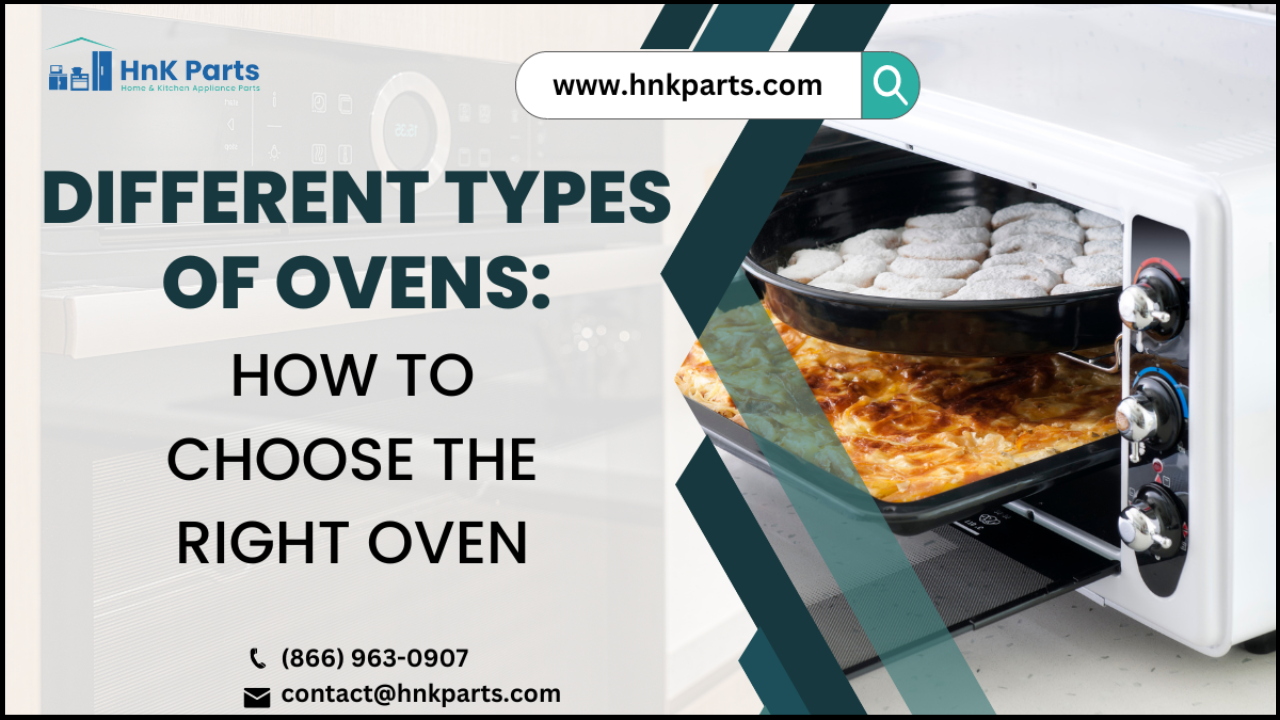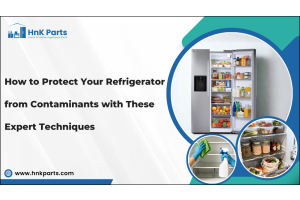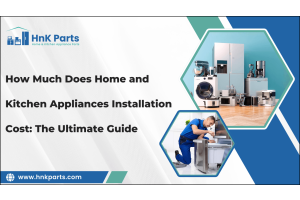
9 Different Types of Ovens: How to Choose the Right Oven
Choosing the right oven is an important thing because it can impact the quality of your cooking, energy efficiency, and overall safety. Different types of ovens are designed for different cooking needs, so selecting the appropriate oven for your specific requirements can ensure that your food is cooked properly with a delicious taste. Moreover, an energy-efficient oven can reduce your energy bills.
The size, safety, and features of an oven that are very important to know before buying it. Overall choosing the right oven will improve your cooking experience and help to prepare food with ease and convenience.
There are different types of ovens available including gas and electric based on the cooking needs and environment. Commercial kitchens opt for different types to suit their heavy usage and there are ovens available for residential kitchens also for minimum or small quantity usage.
Here in this article, we will see about different types of ovens and some common replacement parts for them.
|
Table of Content: What are the different types of ovens? |
What are the different types of ovens?
Ovens have their own unique features and cooking capabilities. Here are some different types of ovens
Gas Oven:
Gas ovens use a flame with the help of gas to heat the food. They are popular as they require less cooking time, and use less energy. The heat will be generated at the bottom of the oven and in some models there is a broiler present at the top which is also used as a heating element.
They have precise temperature controls to adjust the flame inside and are available in different sizes. As they use flame as a source, the food is cooked properly and evenly. Gas ranges use more moisture while cooking the food, hence they are mostly used in bakers.
Gas ovens are less used these days as they need a separate gas line. To replace this there are many other types of ovens available that don't use gas as a main source.
Electric Oven:
Electric ovens are the most common type and are usually used in residential kitchens. A heating element is present inside which is used as a heat source in this type of oven. It is mostly similar to the gas type, the only difference between them is the heat source. With the help of a heating element, the heat inside the oven is evenly distributed and maintains a consistent temperature throughout the cooking process.
Electric ovens have simple controls and settings that help the user to access the appliance with ease. The maintenance required is less compared to the other types but takes more heating time to prepare the food.
Wall Oven:
Wall ovens are again classified into two categories, single-wall ovens, and double-wall ovens. These types of ovens are installed inside the wall or cabinet by eliminating the use of floor space. Both gas and electric variants are available in this type with a wide range of styles and sizes.
- A single wall oven is the standard type of oven which might be gas or electric. The only special thing is it is placed inside the wall. They have all the features of temperature controls and other settings similar to the other ovens.
- A double-wall oven is similar to a single-wall in terms of operations, the only difference is it contains two ovens with various cooking capacities. They are mostly used in commercial kitchens where large quantities of food should be prepared.
Wall ovens maintain your kitchen very attractive and you can avail stylish designs. They should be installed in a perfect space for the best accessibility and these ovens will cost you more.
Read more about the best wall ovens.
Microwave Oven:
Microwave ovens are used to heat the food instantly whenever it is necessary and are mostly used in smaller kitchens. They generate high-frequency electromagnetic waves to heat the food.
Microwaves are best suited for reheating leftovers, preparing frozen meals, and cooking small portions. They are popular for their compact size and easy-to-use features. They are widely used everywhere now but can perform only limited operations. It is not suitable for fresh and large amounts of cooking.
Convection Oven:
Convection ovens are the most preferred among the others as they cook the food evenly and tasty. It consists of a fan inside which is used to circulate the hot air and maintains the constant temperature in all the corners of an oven. In this type of oven, food can be prepared in multiple racks and promotes browning, roasting, and crisping.
They are best suited for food that requires exact temperature and even heat distribution. Convection ovens cook food rapidly and different types of dishes can be made at the same time. This type of oven lasts long and won’t cause any repairs or damages easily.
Conventional Oven:
Conventional ovens are known as traditional ovens that have different heating elements based on the model. They can be either gas or electric. Most of the time the heating element is located at the bottom in these types and in some models the heating element is present on both sides, top and bottom.
They are used in making delicate recipes with familiar functionality. Conventional ovens allow you to achieve different cooking results depending on the rack that you are using to prepare your food. These ovens take more time to prepare food and sometimes may result in uneven cooking.
Steam Oven:
Steam ovens are most popular these days and are costlier compared to gas and electric ovens. They use steam to create the heat and use dry heat to cook the food which helps to preserve the nutrients and flavor of the food and uses less oil.
Steam cooking helps to retain moisture in food, which can result in juicer and flavorful dishes. Crispy or browning food cannot be made from this type of oven and takes more time to prepare food than usual.
Steam ovens are easy to clean as the steam helps to loosen and remove food debris from the oven walls and racks. They are a great choice for health benefits and flavorful meals.
Self-cleaning Oven:
Cleaning an oven is a big task and that requires more time to clean the burnt food, grease, oil, etc. These self-cleaning ovens can save us time and energy. They use extra heat to burn the food debris and other residues that are left over.
There are two types of self-cleaning ovens, pyrolytic, and catalytic.
Pyrolytic ovens use extra high temperatures to burn the food particles and if there are any other particles present, the heat will turn them to ashes or powder and you can clean them easily.
Catalytic ovens use a special coating on the oven walls that absorbs and breaks down food debris and other residues over time.
Self-cleaning ovens are costlier and require longer cleaning times.
Freestanding or slide-in ranges
Range ovens are again categorized into two types, Freestanding, and slide-in ranges.
-
A freestanding range oven is a combination of a cooktop and an oven. The oven is located below the cooktop and the entire unit can be placed anywhere in the kitchen without the need for built-in installation.
They come in a variety of sizes and designs to match any kitchen decor. The freestanding range can be of any type such as self-cleaning, convection, gas, electric, etc. It saves us space as it has both a cooktop and an oven in a single unit. They are difficult to move and because of their size and weight and sometimes may not fit seamlessly into the kitchen design compared to built-in appliances.
-
Slide-in range ovens are also available in both gas and kitchen including self-cleaning and convection options. They are made to fit between the cabinets and give your kitchen a seamless look.
These ovens are more expensive and require professional installation.
What are the common oven replacement parts?
An oven is a complex kitchen appliance that consists of many parts that might get damaged due to heavy usage or improper maintenance.
Some of the common oven replacement parts are:
Burner:
Burners are mostly present in the gas type of ovens to generate heat. It works with the help of gas and allows for cooking and baking properly.
Oven burners can come in different sizes and shapes based on the oven model. Ovens may consist of multiple burners or one single burner that heats the entire oven. The burner will be located at the bottom of the oven and may get clogged with food debris which affects the performance of the oven.
You should clean your burner regularly for better performance. If you find any wear or damage you have to replace your burner.
You can find the best quality burner from HnKParts. We provide the best OEM replacement parts for your home and kitchen appliances.
Oven Door:
Oven doors will be strong enough to withstand extreme heat conditions, contain the heat inside, and allow you to monitor the food inside. They should be cleaned regularly and no food debris or dust should be present on the seal that can reduce the performance.
If the oven door is not closing properly, check if the seal is in good condition or not. If the seal is good, check the hinges of the door. Most of the time door hinges or gaskets may get damaged and you have to replace them immediately.
Oven Rack:
The oven rack is used to hold the tray and other food items during the cooking. It should be placed in an exact position in the oven to evenly cook the food. If you are unsure about the placement then see instructions in the manufacturer guide.
It can get dirty or can cause stains and grease marks and should be cleaned regularly with a soft cloth and soap water. Ensure the rack is dry before placing it back in the oven after cleaning. Any moisture on the rack may affect the performance of an oven.
If the rack is bent or if you see any damage, it is time for a replacement. Replace the oven rack by checking the compatibility of your oven's model and installing it properly.
Thermocouple:
An oven thermocouple is mostly used in gas ovens and is used to monitor and regulate the oven’s temperature. It is located near the oven burner. Any uneven temperatures in the oven will be controlled by the thermocouple with the help of a gas valve.
Over time, the thermocouple can become dirty or damaged, which can affect the performance and accuracy of an oven. It is important to clean the thermocouple regularly to ensure proper function and safety.
Gasket:
An oven gasket is used as the seal of a door that helps to close the door tightly to prevent heat from escaping. Though it is made of high-quality heat-resistant material, it can get damaged or worn which results in the performance of an oven.
A damaged gasket can cause heat to escape from the oven and result in longer cooking times, uneven cooking, or burning of food. Replacement of the part is needed in this case and you should get the gasket that is compatible with your oven’s model.
Regular maintenance can prevent the buildup of dirt, grease, or debris and you should clean the gasket with mild detergent or water and should let it dry completely before use.
Door Hinges:
Door hinges are used to attach the door to the oven's main body and can be opened or closed easily and securely. They are used to support and withstand the weight of the oven door and provide smooth opening and closing.
They can get clogged with dust and sometimes they may become loose or even tight which affects the door's ability to close properly or stay closed. You need to replace them with new ones that are compatible with your oven’s model.
So, it is important to keep your oven door hinges clean and free from dirt, grease, or other debris. They can be cleaned with soap water or with mild detergent.
Control Boards:
Various functions of an oven are controlled by the control board which will be mostly located behind the control panel. It is connected to various sensors and components throughout the oven. It receives the input from the user through the control panel and sends output signals to the various components to start the required function.
It allows you to pre-program some cooking modes, displays the cooking time and temperature, and may also have self-cleaning functions. If there is any malfunction or damage in the control board, the oven may not work properly. You can face problems like the oven not heating properly, the display not working, showing incorrect information, or not responding to the input.
You need to replace the control board that suits your oven model. Get the replacement part from the original manufacturer or the OEM parts supplier.
Ignitor:
An ignitor is mostly used in gas types of ovens to ignite the gas and is located at the back of the oven which is connected to the gas valve through a set of wires.
They are made with the most reliable material and quality and don’t get damaged easily. If it gets damaged, your oven cannot produce heat and should be replaced immediately.
Replacing the ignitor doesn’t need any professional, you can do it yourself by getting the exact model and following the safety instructions.
Igniters are most commonly available in the stores for different models and functions but you have to buy the OEM part to obtain the better experience of your appliance.
To know more about the parts of an oven read our full article about them.
Conclusion
We have seen the different types of an oven and their functions. Choose the right one that perfectly suits your kitchen and also based on your required operations.
Look for the size and shape of the oven which is suitable for your kitchen and choose them accordingly.
FAQs
How do I choose the best type of oven for my kitchen?
The key factors to consider when selecting an oven are the type of fuel used, size and capacity, cooking features, and budget.
Based on your kitchen space and the operations or types of cooking you require, choose the best one which is energy efficient, reliable, and durable.
How long does it take to cook chicken breast in an oven at 350 degrees?
The cooking time for chicken breast in an oven at 350 degrees Fahrenheit or 175 degrees Celsius depends on the thickness and size of the chicken breast. A general guideline to cook boneless or skinless chicken breast is 20-25 minutes or until the internal temperature reaches 165 degrees Fahrenheit (74 degrees Celsius) when measured with a meat thermometer.
However, if the chicken thickness is more, it may take more time to cook.
How much does it cost to replace an oven element?
The cost of an oven element may vary on the type and the model of your oven. On average the cost of a replacement oven element ranges from 20-50 USD.
However, this cost can vary depending on the brand and the labor cost to install the new element may also vary depending on your location and the specific technician and service provider. It is best to get a quote from a professional to determine the exact cost of replacement.
What is the life expectancy of an oven?
The oven's life expectancy depends on its brand, usage, maintenance, and quality. Most ovens have an average lifespan of 10-15 years.
Regular cleaning and maintenance, such as wiping down the interior and exterior of the oven, cleaning the oven racks and burners, and replacing worn-out parts, can help to prolong the life of your oven.






